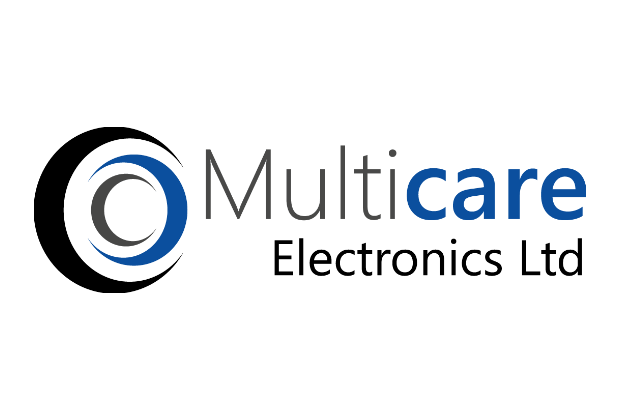Home › Forums › Product Discussion & Questions › BeoLink › Universal Link Adapter
- This topic has 69 replies, 17 voices, and was last updated 2 months, 3 weeks ago by
Mikkel Pedersen.
-
AuthorPosts
-
14 October 2023 at 17:47 #49571
given that the maker of these products was more or less banned from this forum.
If I remember correctly, the maker of this product was openly advertising for his product to be sold without kindly asking to the forum runners. Absolutely nothing to do with this unless it would be an underground noise with B3OHACK3R selling his box under the hood in PM, which I doubt.
14 October 2023 at 19:45 #49572That was a guy (a former B&O employee by the way), who had made ‘a product with great commercial potential’ and was willing to offer that product to the world, risking his investments.
That he was not aware of the rules of the forum, is another thing….that I must admit.
None the less he makes interesting products, that surely might be interesting for the Beoworld members.
Sorry for this hick-up….I just couldn’t help it.
Enough for now!MM
14 October 2023 at 20:21 #49573Enough for now!
By respect, I agree.
15 October 2023 at 20:50 #49574Stunning result you have here, congratulations !
I am very curious about that enclosure ! Is that something you designed ? Or is it an off the shelf part ?
Full disclosure here, I have an ongoing project that bears some resemblance with yours, but I have already settled on an more conventional enclosure.
15 October 2023 at 21:46 #49575Stunning result you have here, congratulations ! I am very curious about that enclosure ! Is that something you designed ? Or is it an off the shelf part ? Full disclosure here, I have an ongoing project that bears some resemblance with yours, but I have already settled on an more conventional enclosure.
Thanks! Cool that you are working on something similar. Looking forward to your project. 🙂
Yes, the enclosure was entirely custom made for this one. Two CNC machined and anodised aluminium shells combined with two 3D printed parts. The one on the front is a nice SLA print. On the inside there are two indentations for the wireless flex antennas. The one on the backside currently is an FDM print – will probably update it to a metal one some time in future.
16 October 2023 at 22:31 #49576Very interesting project, why not open-source it?
18 October 2023 at 03:35 #49577Fascinating product. It’s hard to say how big of a market something like this would have given the vintage nature of its application. But I’d certainly be interested personally. I have an older Beogram and a Beosound 9000 that I believe could employ this.
Open sourcing it or having a distributor for it would be an interesting development.
18 October 2023 at 08:25 #49578Open sourcing the whole thing would not be that much useful. For the average DIY people it will be much too difficult to build – mostly because of the processor part.
Given the risk of low sales numbers – making a regular product out of that would result in being somewhat on the “expensive” side. Probably more than the devices it can control are worth on the 2nd hand market nowadays.
Probably not a huge issue if it would be an original beo product. Nevertheless in the end it would be a 3rd party unit and as matador wrote a few days ago I also see this as a critical point.23 October 2023 at 10:13 #49579Had some more thoughts about this one.
What could probably work out is developing a light version sold as a semi-finished kit to DIY people.
So just the ML and DL interface with a single USB connection for power, audio and data.Anybody interested in that?
Happy to donate a certain amount to beoworld for every unity sold or something similar.23 October 2023 at 15:02 #49580That sounds interesting. Which use cases could this scaled version be used for please? Is there a web interface or app that would allow to control ML or Datalink audio systems via WiFi and to stream these audio sources via AirPlay (there will not be a network RJ45 connection?)
Beyond a missing RIIA preamplifier which other functions will be missing from the light version?
I would be interested in further integration of new and legacy products, just not sure what new features and use cases it will bring (as a light version).
23 October 2023 at 16:57 #49581That sounds interesting. Which use cases could this scaled version be used for please? Is there a web interface or app that would allow to control ML or Datalink audio systems via WiFi and to stream these audio sources via AirPlay (there will not be a network RJ45 connection?) Beyond a missing RIIA preamplifier which other functions will be missing from the light version?
Probably similar to that old PC2 interface. No direct network connection or streaming – the host system needs to take care of that.
A possible “light” version would cut away the processor including the network interface as well as the nice housing.
Maybe leaving the RIAA integrated makes a lot of sense. Probably better splitting it up in a dedicated DL and a dedicated ML version. Both at the same time isn’t necessary anyway.Technically it would still be capable of the same functions like mentioned for the “full” version. Just not fully integrated. The end user would be required soldering some connectors, putting it in a standard housing and setting up the software. Could supply some software examples how certain things can be done…
23 October 2023 at 17:27 #49582First of all very interesting project even though it might not become more than what it is now.
Some use cases for a light version from the top of my head:
- as an interface to activate a Beolab 2000/3500 or Beolink Active when sound is detected from analog audio input (Airport Express, Chromecast audio etc.) That said this already exist as a product from Almando.
- As an interface for controlling and relaying sound from a Beogram/Beogram CD/Beocord to an airplay/chromecast device
Probably better splitting it up in a dedicated DL and a dedicated ML version. Both at the same time isn’t necessary anyway.
One use case for both DL and ML could be to actually control a Beogram from a Masterlink only product (BS Ouverture, BC2, BS4, BS5 and Beovisions with ML). Would probably need the use of some alternative source commands to make this work,
23 October 2023 at 19:22 #49583Great, thanks for your input!Yes, both scenarios would be possible with such a USB connected light version.One use case for both DL and ML could be to actually control a Beogram from a Masterlink only product (BS Ouverture, BC2, BS4, BS5 and Beovisions with ML). Would probably need the use of some alternative source commands to make this work
True, thought about this one as well. Not exactly sure if I remember correctly but couldn’t you just use a 1611 converter for using a turntable in a ML setup (Phono / N.Radio source)?
23 October 2023 at 19:43 #49584True, thought about this one as well. Not exactly sure if I remember correctly but couldn’t you just use a 1611 converter for using a turntable in a ML setup (Phono / N.Radio source)?Not as far as I know. In all my testing with the 1611 converter it was not possible to control a Beocord (I have never tested with a Beogram, but will try that soon) directly connected to the 1611, only with a Beomaster, or a MCL2AV. As far as I understand B&O’s termonologi for datalink, there is Audio Link for connection between Beomaster and Beocord/Beogram/CD, and Audio Aux Link for connection between Audio Masters and Video products + the 1611 and 1614 converters23 October 2023 at 20:13 #49585I could be wrong. Maybe I mixed up something regarding that.
Indeed the two protocols are pretty different. Sometimes they are also referred to Datalink ’80 and Datalink ’86.
The first generation is used for talking to the Beogram / Beocord peripherals. Just two identical bytes being sent back and forth.
Data pins of the TP2 and the Phono are always connected in parallel. I guess two or maybe even more bits are some kind of simple device address while the other ones are the control command. Haven’t investigated that in depth as it’s simple enough to record and just play back the commands when needed.23 October 2023 at 20:20 #49586My take on it is mentioned here https://forum.beoworld.org/forums/topic/beolab-3500-and-1611-converter-settings/page/19/#post-20377
My guess is that the Datalink for Beocord, Beogram etc. Only has 2 device types, and in beomasters with more sockets extra outputs from the Microcomputer is used for these sockets
23 October 2023 at 20:41 #49587True, could be.
Was testing with a BC9500 here. So no CD / TP1 sockets.
Phono and TP2 commands are looking different but could be that Phono / CD and TP1 / TP2 are the same.23 October 2023 at 20:46 #49588Can confirm, currently hacking around with what I believe is the Datalink 86 protocol on my Beosystem 5500 ( so CD / TP / TP2 / PHONO ). TP and TP2 protocol are identical, except that TP2 has no support for running status (to provide the MCP5500 with live display).
CD and PHONO also seems identical, but I haven’t pushed the investigation enough to confirm that.
23 October 2023 at 20:56 #49589CD and PHONO also seems identical, but I haven’t pushed the investigation enough to confirm that.
They are identical enough that the CD connector on a MCL2AV can control a Beogram
23 October 2023 at 21:21 #49590One use case for both DL and ML could be to actually control a Beogram from a Masterlink only product (BS Ouverture, BC2, BS4, BS5 and Beovisions with ML). Would probably need the use of some alternative source commands to make this work,
A trivial correction, but BS Ouverture does have datalink – you were probably thinking of BS3000/3200 which are ML-only. ?
Following the thread with interest …
-
AuthorPosts
- You must be logged in to reply to this topic.






